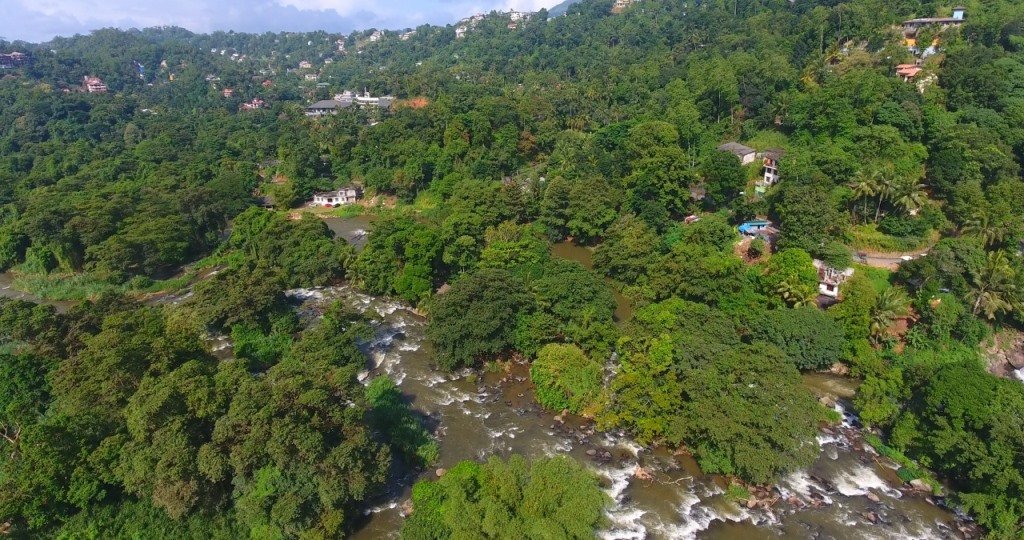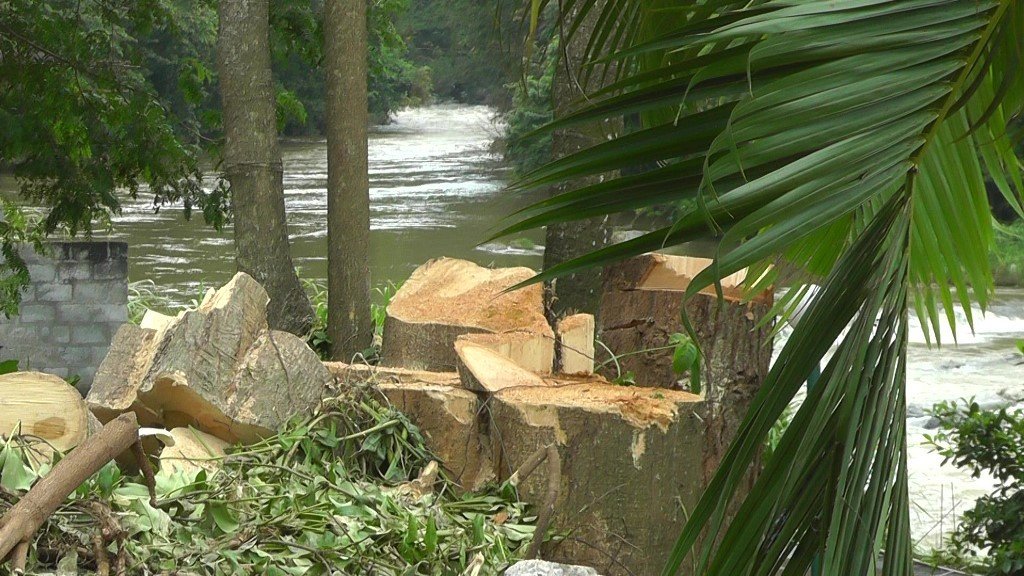Illegal constructions, squatters threaten the delicate wetlands ecosystem near Kandy
The mighty Mahaweli River nourishes tens of thousands of acres of farming lands on her 335 km length. Whatever the ravages she has suffered elsewhere on her long journey to the sea, this historic river may have thought she was safe from humanity’s depredations in the lush hills of Gannoruwa, not too far from Kandy. Today, however, this queen of our watercourses, surely bewails her failure to protect her very own small string of midstream islets, called the Hakkinda Islands located in Warathenna, Gannoruwa.
The Warathenna-Hakkinda Environmental Protection Area—an area of 59.4 hectares straddling the Hakkinda Archipelago in the stretch of river from Gannoruwa to Warathenna—is the only designated Environmental Protection Area on the 335 km long Mahaweli River. There are many natural features in this area that make it deserving of that designation. Hakkinda EPA, which includes both the widest and the narrowest points of the Mahaweli River, contains about twenty attractive islets. The largest of them covers an area of about 12 acres. Environmental scientists have listed 23 species of mammals, 77 species of birds, 17 species of reptiles, and 17 species of snails.
Research conducted by the National Aquatic Resources Research and Development Agency (NARA) in the Hakkinda Archipelago waters has identified 18 species of fish. Among them, the Green Labeo (Labeo fisheri), a species unique to Sri Lanka, can only be seen at this place. This species is listed in the IUCN Red List since 2007 as an ‘endangered species’. This area is also home to many endemic fish species, 16 species of dragonflies, five endangered species of cryptocoryne, and many other reptiles, animals, and birds.
Hakkinda wetland area was declared as the Warathenna–Hakkinda Environmental Protection Area by Gazette Notification 2024/6 dated 17th June 2017 to prevent unauthorized constructions and removal of vegetation in the area. However, ecologyl groups complain that environmental destruction in the archipelago has increased following the Gazette notification. They charge that government agencies authorized to protect the Hakkinda EPA neglect their duties. Eco-activists allege that the Central Environmental Authority, which has the main responsibility, has failed to prosecute unauthorized construction.
People of the neighbouring communities who love Hakkinda are demanding to know the real situation of this little wetland paradise. Have those illegal constructions been marked out? Have the squatters and hawkers been prosecuted? If not, why not?
It was in this context that the Right to Information Act (RTI) was used to obtain the relevant information from the CEA. In response, the CEA disclosed that there were six sites in the area identified as unauthorized constructions.
A concrete handrail has been constructed by cutting the right bank reserve of the Mahaweli River at Polkatta on Dodamwala Sir Kuda Ratwatte Mawatha at the expense of the government. Although the CEA has asked the Kandy Municipal Council in writing to take steps to demolish it, nothing has been done. The CEA says an unauthorized hotel called ‘Why Not Garden’ is being built on Rajasinghe the Second Mawatha that parallels the river and that the owner was being prosecuted for failing to comply with the provisions of the National Environment Act. A plaint has been filed in the Kandy Additional Magistrate’s Court under case number 36491 against the construction in question. The CEA has taken also filed a lawsuit under case No. 36490 in the Kandy Additional Magistrate’s Court regarding another construction on Kuda Ratwatte Mawatha that was constructed contrary to an approved plan.
The CEA stated that any permitted construction within the Warathenna-Hakkinda EPA should be carried out outside the reservation area—five metres away from the riverbank. The authorities are currently taking action at their usual slow pace so characteristic of the public service. Although there are many other illegal activities, including deforestation and landfilling, observable in this particular EPA, it is clear that the law is not being enforced against them.
In response to the RTI queries, the Central Environmental Authority has listed five reasons that led to the declaration of the Hakkinda Archipelago area as an EPA in 2017. The CEA also provided information on the powers the Authority may use to protect EPA. Over the last five years, the Authority has identified only six sites as ‘unauthorized construction’ sites. It is a matter of concern that only two of those responsible have been prosecuted.
Gayan Yaddehige



Recent Comments